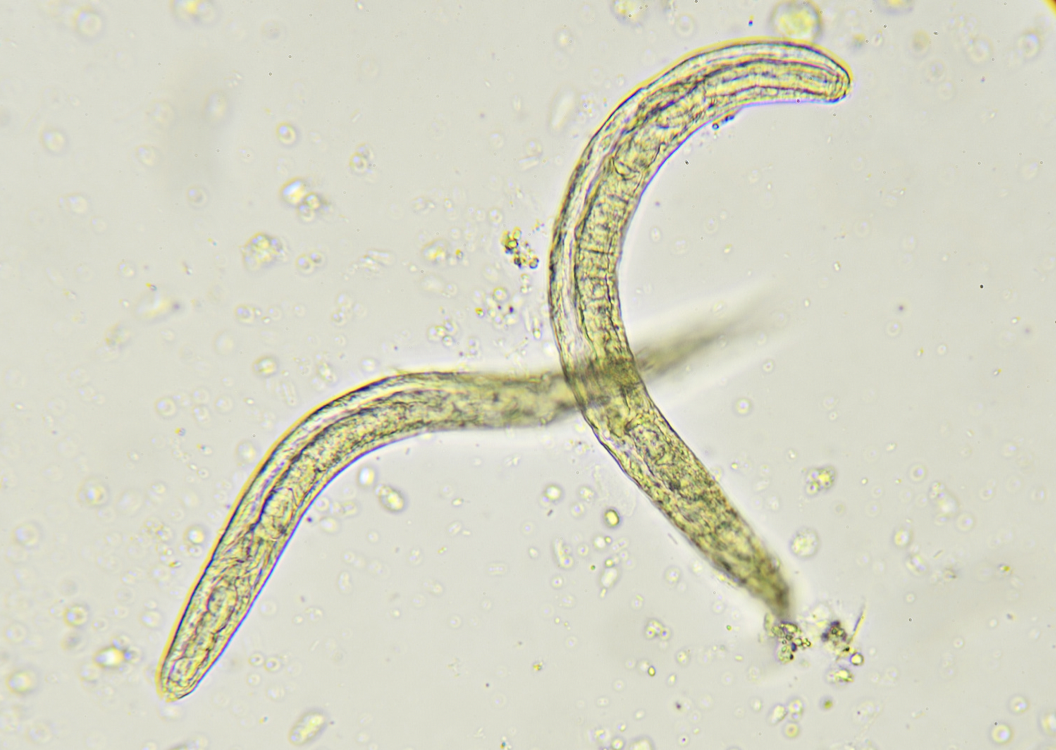Definition
Taeniasis is a disease caused by tapeworm infection. Tapeworms can infect both humans and animals. They are flat and consist of multiple segments along their bodies. A person can contract this disease by consuming food and drinks containing tapeworm larvae or eggs, such as undercooked beef, pork, and fish. Tapeworm eggs that enter the digestive system can hatch and cause intestinal infections. Meanwhile, tapeworm eggs that successfully exit the digestive tract can migrate to other organs and form cysts containing worms in those locations, leading to infections elsewhere.
Tapeworm infection can be treated, but it should not be underestimated as it can spread to other organs, potentially causing more serious health problems. Typically, individuals with taeniasis are unaware of worms in their bodies until they notice segments of the worm being expelled during bowel movements.
Causes
Three primary types of parasites cause tapeworm infections:
- Taenia saginata originates from beef.
- Taenia solium originates from pork.
- Taenia asiatica also originates from pork.
T.solium can cause another condition called cysticercosis, in which larvae grow in other parts of the body, such as the brain and muscles.
Tapeworms require a host body to reproduce, and the human small intestine is the only suitable place for tapeworms to stay alive. The life cycle of these three types of worms in the human body is as follows:
- Adult worms reproduce by laying eggs.
- Mature tapeworm eggs develop into oncosphere larvae.
- Oncosphere larvae, still containing eggs, are released from the body of the adult tapeworm and exit the anus with human feces.
- When tapeworm eggs are expelled from the human body, they can potentially infect another host.
Pigs and cows are two types of animals that become hosts for tapeworms. These animals become infected by ingesting contaminated feed containing tapeworm eggs. Once inside the intestines of the animal, the tapeworm life cycle proceeds as follows:
- Oncosphere larvae hatch into tapeworm embryos, which penetrate the intestinal wall and enter the animal's bloodstream.
- The larvae then spread to other parts of the animal's body such as muscles, tongue, heart, or liver.
Humans can ingest tapeworm larvae hidden inside raw meat or undercooked meat, or by consuming food or drinks contaminated by human or animal feces containing the parasite or its eggs. After ingestion, the worm will attach strongly to the wall of the small intestine and grow into an adult worm.
Risk factor
Several factors can increase the risk of taeniasis:
- Poor hygiene: Inadequate personal hygiene habits can elevate the risk of contracting tapeworm infections orally.
- Occupations involving contact with animal feces.
- History of traveling to countries with poor sanitation.
- Consuming raw or undercooked meat: Improper cooking methods may fail to eliminate tapeworm eggs and larvae present in the meat.
- Residing in areas endemic to taeniasis.
- Having certain medical conditions such as AIDS, HIV, or diabetes mellitus.
- Organ transplant recipients.
- Chemotherapy patients: Chemotherapy weakens the body's immune system, making individuals more susceptible to infections.
Symptoms
Most people infected by parasites do not exhibit any symptoms. However, individuals infected by larger tapeworms like Taenia saginata have a higher likelihood of experiencing symptoms. Some unique symptoms of this worm infection include:
- Abdominal pain
- Decreased appetite
- Drastic weight loss without an apparent cause
- Digestive disturbances
- Feeling weak, lethargic, and lacking energy
- Difficulty sleeping or insomnia
- Irritation in the anus (perianal) caused by expelled worm fragments or eggs
- Observing worms, worm fragments, or worm eggs during bowel movements. Often, people only realize they have a parasitic infection when they directly see worms or worm eggs in their stool.
Meanwhile, the tapeworm Taenia solium can cause cysticercosis, which may manifest clear symptoms if it has infected body organs such as muscles, eyes, and the brain. Some symptoms of T. solium infection include:
- Soft lumps beneath the skin
- Blurred or cloudy vision
- Swelling in the retina of the eye
- Headaches
- Seizures
- Difficulty concentrating
- Balance disturbances
Diagnosis
To diagnose taeniasis, doctors typically conduct a medical interview to gather information about:
- The symptoms experienced by the patient.
- The patient's medical history.
- The patient's occupation.
- The patient's living conditions.
- The patient's travel history to regions at risk of tapeworm transmission.
Following this, a thorough physical examination is performed, focusing particularly on the abdominal area, anus, and other organ systems if there are suspicions of complications to other organs such as the eyes, muscles, or brain.
Diagnostic tests that may be conducted include:
- Stool examination to detect the presence of tapeworm eggs or worm segments in the stool.
- Blood tests to detect antibodies reacting to tapeworm infection.
- Imaging tests such as ultrasound, X-rays, CT scans, or MRI scans to identify severe tapeworm infections in other organs.
Management
The treatment of tapeworm infections generally involves administering anthelmintic drugs, such as praziquantel and albendazole. Both of these drugs can effectively kill tapeworms and their eggs. Typically, these medications are taken for several weeks to eliminate the infection completely. Eventually, the dead tapeworms caused by the medication will be expelled from the body along with the feces.
Complications
Taeniasis can lead to several serious complications, including:
- Blockage in the digestive tract.
- Disruption of internal organs.
- Disorders in the brain or central nervous system, known as neurocysticercosis.
- Symptoms of obstruction and inflammation in the appendix caused by tapeworms developing in the intestines.
- Disorders in the bile ducts and pancreas, characterized by symptoms such as pain in the lower right side of the abdomen, nausea, vomiting, and fever.
Tapeworm larvae that migrate to other organs like the heart or lungs can form cysts or lumps. Rapidly growing lumps may impede blood flow and disrupt organ function, and they can also burst, spreading larvae to other organs. Symptoms of this complication may resemble allergic reactions, including itching, swelling, and difficulty breathing.In cases of neurocysticercosis caused by Taenia solium larvae in the brain or central nervous system, patients may experience severe headaches, seizures, blindness, and epilepsy. In severe cases, patients can die due to the large size of tapeworms, some of which can grow up to 9 meters inside the body.
Prevention
Some steps to prevent taeniasis include:
- Avoid consuming undercooked meat.
- Thoroughly wash all fruits and vegetables before consumption.
- Cook food ingredients until thoroughly cooked.
- Take pets infected with tapeworms to a veterinarian for treatment.
- Wash hands with soap before and after handling food, before eating, and after using the toilet.
- Maintain personal hygiene and environmental cleanliness by adopting a clean and healthy lifestyle.
- If living in an endemic area, consider taking deworming medication annually to prevent infection and the spread of tapeworms.
When to see a doctor?
Consult a doctor if you experience any of the abovementioned symptoms, as tapeworm infections rarely exhibit specific symptoms. Prompt treatment for worm infections can prevent serious complications.
Looking for more information about other diseases? Click here!
- dr Ayu Munawaroh, MKK
Ito, A. & Budke, C. (2021). Genetic Diversity of Taenia Solium and Its Relation to Clinical Presentation of Cysticercosis. Yale Journal of Biology and Medicine, 94(2), pp. 343–349.
Centers for Disease Control and Prevention (2020). Parasites – Taeniasis.
Mayo Clinic (2021). Diseases & Conditions. Tapeworm Infection.
Burke, D. Healthline (2018). Taeniasis
Dunken, M. WebMD (2021). Tapeworms in Humans.












